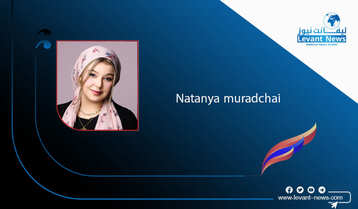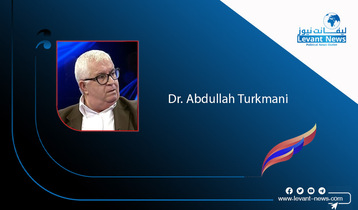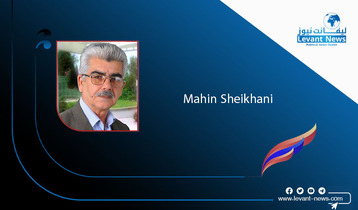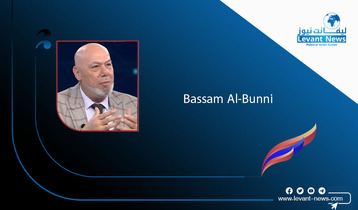-
The role of Hasaka's Yazidi House in rescuing genocide survivors

Prior to the announcement of the Kurdish –led Autonomous Administration of Rojava, and within the political turmoil prevailing Syria, Yazidis there were preoccupied with something else.
In 2008 the Yazidi community of Hasaka sought to set up a local Yazidi society. However, their efforts fell to the ground as security services of the Syrian regime denied it authorization. The idea was given up, however, temporarily.
With roots found in Mithraism and Mazdaism, the Yazidi religious mythology differs immensely from that of Islam and Christianity in the sense it is a non-missionary sect.
Depoliticized and invisibilzed, Yazidis saw in the so-called Arab Spring, to which Syria had a most substantial part, an opportunity to organize and run their internal and communal affairs.
On May 11, 2012, and after long months of deliberations, the first ever overall conference of Hasaka's Yazidis was convened. The long-awaited idea was materialized.
The ceremony that took place in the ancestral Yazidi village of Qazlachokh in Hasaka, was crowned with the establishment of the Yazidi House of Jazira (Hasaka Region).
The Yazidi House is an aid body that used to spot and bring in captors, give them medical treatment and facilitate their return to Shingal. Structurally, the house is made up of 52 members, 21 of them are females.
Religiously hierarchical and stratified, the idea of Yazidi house(s) is a newly devised one in the Yazidi community. "There had never been such houses in the Yazidi culture. The idea was modeled upon those houses set up in diaspora." Elias Sido, a Yazidi House member, who serves as the Co-chair of the Jazira Culture Body said in interview.
The newly born body served as the foundation stone for the Yazidi community in Hasaka for the years to follow substantially helpful for members of the sect in both Syria and Iraq.
The Yazidi house was recognized as an overall umbrella body for all Yazidi institutions in Rojava.
The onslaught on August 3, 2014, by fighters of the Islamic State (ISIS) against the Yazidi ancestral homeland of Shingal resulted in the forcible displacement to Syria of thousands of men, women and children. However, though the majority crossed to Kurdistan Regional Government, many, fearing that ISIS would attack them again, remained on Syrian soil.
With 1,293 people killed in the first days of the ISIS attack, the Islamic State abducted 6417 Yazidis men, women and children, according to figures from the Kurdistan Region's office for Rescuing kidnapped Yazidis. The majority, for strategic de-Yazidization ends, were transported to Syria. The Islamic State wanted Yazidis be separated from their ancestral homelands.
Much of the Yazidi women and girls were squeezed into Baghouz. After the capture by the Kurdish- led Syrian Democratic Forces (SDF) of Baghouz in March 2019 the House was flooded with Yazidi women, girls and boys.
Since then the house assumes the role of a mediator and a rehabilitation center where those freed from activity are introduced anew to the Yazidi community after long year of family loss, bereavement and sexual enslavement.
In June 2022, Rosetta Haj Baijo from the Shingal village of Tal Qasab was rescued from the al-Hol camp. She was handed over by the Yazidi House to her relatives. However, 2717 (1273 female and 1444 male) Yazidis remain unaccounted for up to date.
Notably, the capture of Baghouz facilitated the return of abducted Yazidis. However, in broader lines, ISIS's territorial loss made finding those still missing a more difficult mission.
The Hasaka Yazidi House was pivotal in rescuing and shielding Yazidi women and girls from captivity of the Islamic State until handed over to their families in Kurdistan Regional Government. In hindsight, it has proven a step in the right direction.
"The Yazidi House is the center of activities for the community and is perfectly placed to assist those Yazidis coming out of ISIS captivity as they reunite with their families," Nadine Maenza current President of the International Religious Freedom Secretariat and former head of the United States Commission on International Religious Freedom (USCIRF), who visited the House on several occasions, said via WhatsApp.
In close collaboration with the Kurdish- led authorities of Rojava, many Yazidis have been rescued from areas as far as Idlib in northwest and Daraa in the southwest.
Farouq Tozo, Co-chair of the Yazidi House says "413 Yazidis were spotted and rescued from Islamic State's captivity by the Yazidi House." Tozo noted that out of the 413, the total of 263 are women and girls and the remainder (150) are boys born to Yazidi fathers and mothers. Children born to fathers affiliated to the Islamic State, however, are not included in this data, Tozo confirmed.
However, the Yazidi House played another role, though not very much brought under the spot, however, substantially important and relevant.
"The Mala Ezidiya played an important role in the search for Yazidi children and women in al-Hol camp and cooperated with traditional religious leaders of the community. They also hosted survivors until they could return to Iraq and helped to find foster families for children of Yazidi women who were raped by IS fighters and who were not taken with their mothers to Iraq." Austrian researcher and author Thomas Schmidinger said.
With the bulk of the rescued coming from Baghouz, many of those assumed missing are believed to be held at the notorious al-Hol camp, some 45 kilometers in eastern Hasaka city. Prior to the recently launched security operation, there are "though unverified, however, 70 Yazidi women, at least, are believed to be held in the al-Hol camp," Farouq Tozo claims.
These either fear to disclose their true identities, or are not willing to do so, among other, they want to keep their ISIS born children.
The Yazidi House proved crucial in the aftermath of the fall of Baghouz in that it embraced and rendered medical treatment to Yazidi survivors and reuniting them with their families in Shingal. However, something is lucking.
"The U.S. and the international community should be giving them more financial resources as they support their own community still recovering from genocide," Maenza said.
In the past, Syrian Yazidis were invisiblized and remained in the darkness, now they unreservedly and openly celebrate their religious festivals and observe all the community's rituals and cultural festivities, however, their existential presence in their ancestral homelands strikingly remains a threatened one.
With conversions are not allowed and outer marriages are severely punished by the community, the Yazidi belief in maintaining ancient bloodlines and self-containment combined with the disallowance of new converts is causing the Yazidi religion to disappear.
BY: Lazghine Ya'qoube
You May Also Like
Popular Posts
Caricature
BENEFIT AGM approves 10%...
- March 27, 2025
BENEFIT, the Kingdom’s innovator and leading company in Fintech and electronic financial transactions service, held its Annual General Meeting (AGM) at the company’s headquarters in the Seef District.
During the meeting, shareholders approved all items listed on the agenda, including the ratification of the minutes of the previous AGM held on 26 March 2024. The session reviewed and approved the Board’s Annual Report on the company’s activities and financial performance for the fiscal year ended 31 December 2024, and the shareholders expressed their satisfaction with the company’s operational and financial results during the reporting period.
The meeting also reviewed the Independent External Auditor’s Report on the company’s consolidated financial statements for the year ended 31 December 2024. Subsequently, the shareholders approved the audited financial statements for the fiscal year. Based on the Board’s recommendation, the shareholders approved the distribution of a cash dividend equivalent to 10% of the paid-up share capital.
Furthermore, the shareholders endorsed the allocation of a total amount of BD 172,500 as remuneration to the members of the Board for the year ended 31 December 2024, subject to prior clearance by related authorities.
The extension of the current composition of the Board was approved, which includes ten members and one CBB observer, for a further six-month term, expiring in September 2025, pending no objection from the CBB.
The meeting reviewed and approved the Corporate Governance Report for 2024, which affirmed the company’s full compliance with the corporate governance directives issued by the CBB and other applicable regulatory frameworks. The AGM absolved the Board Members of liability for any of their actions during the year ending on 31st December 2024, in accordance with the Commercial Companies Law.
In alignment with regulatory requirements, the session approved the reappointment of Ernst & Young (EY) as the company’s External Auditors for the fiscal year 2025, covering both the parent company and its subsidiaries—Sinnad and Bahrain FinTech Bay. The Board was authorised to determine the external auditors’ professional fees, subject to approval from the CBB, and the meeting concluded with a discussion of any additional issues as per Article (207) of the Commercial Companies Law.
Speaking on the company’s performance, Mr. Mohamed Al Bastaki, Chairman BENEFIT , stated: “In terms of the financial results for 2024, I am pleased to say that the year gone by has also been proved to be a success in delivering tangible results. Growth rate for 2024 was 19 per cent. Revenue for the year was BD 17 M (US$ 45.3 Million) and net profit was 2 Million ($ 5.3 Million).
Mr. Al Bastaki also announced that the Board had formally adopted a new three-year strategic roadmap to commence in 2025. The strategy encompasses a phased international expansion, optimisation of internal operations, enhanced revenue diversification, long-term sustainability initiatives, and the advancement of innovation and digital transformation initiatives across all service lines.
“I extend my sincere appreciation to the CBB for its continued support of BENEFIT and its pivotal role in fostering a stable and progressive regulatory environment for the Kingdom’s banking and financial sector—an environment that has significantly reinforced Bahrain’s standing as a leading financial hub in the region,” said Mr. Al Bastaki. “I would also like to thank our partner banks and valued customers for their trust, and our shareholders for their ongoing encouragement. The achievements of 2024 set a strong precedent, and I am confident they will serve as a foundation for yet another successful and impactful year ahead.”
Chief Executive of BENEFIT; Mr. Abdulwahed AlJanahi commented, “The year 2024 represented another pivotal chapter in BENEFIT ’s evolution. We achieved substantial progress in advancing our digital strategy across multiple sectors, while reinforcing our long-term commitment to the development of Bahrain’s financial services and payments landscape. Throughout the year, we remained firmly aligned with our objective of delivering measurable value to our shareholders, strategic partners, and customers. At the same time, we continued to play an active role in enabling Bahrain’s digital economy by introducing innovative solutions and service enhancements that directly address market needs and future opportunities.”
Mr. AlJanahi affirmed that BENEFIT has successfully developed a robust and well-integrated payment network that connects individuals and businesses across Bahrain, accelerating the adoption of emerging technologies in the banking and financial services sector and reinforcing Bahrain’s position as a growing fintech hub, and added, “Our achievements of the past year reflect a long-term vision to establish a resilient electronic payment infrastructure that supports the Kingdom’s digital economy. Key developments in 2024 included the implementation of central authentication for open banking via BENEFIT Pay”
Mr. AlJanahi concluded by thanking the Board for its strategic direction, the company’s staff for their continued dedication, and the Central Bank of Bahrain, member banks, and shareholders for their valuable partnership and confidence in the company’s long-term vision.
opinion
Report
ads
Newsletter
Subscribe to our mailing list to get the new updates!




















